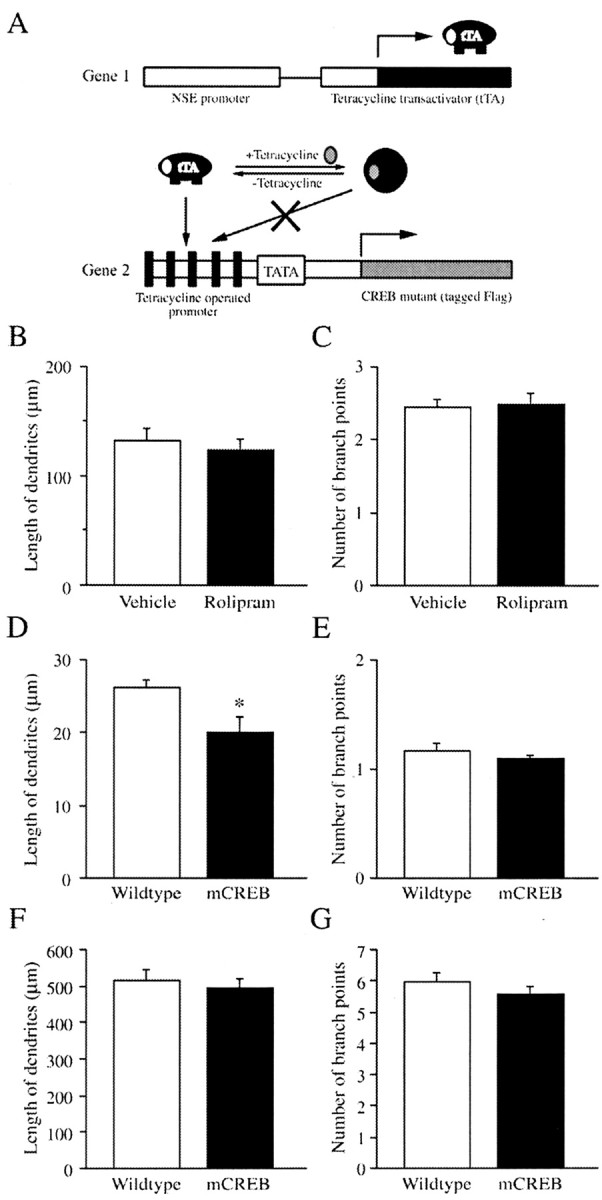Figure 6.

Effect of rolipram treatment on the morphology of Golgi-impregnated SGZ neurons in bi-transgenic mice expressing dominant-negative mCREB. Schematic diagram shows the strategy for development of inducible mCREB transgenic mice using the tetracycline-off system (A). One line of mice contains the tTA gene under the control of a 1.8 kb fragment of the NSE promoter (gene 1). A second line of mice carries a FLAG-tagged mCREB construct, a Ser133 phosphorylation mutant, under the control of TetOp. NSE-tTA x TetOp-mCREB bi-transgenic mice were obtained after crossbreeding these two lines to obtain a system for inducible expression of mCREB. In the graphs (B-G), the length of dendrites (micrometers) (B, D, F) and number of branch points (C, E, G) are presented as the mean ± SEM. B and C show the results of all SGZ neurons, demonstrating that there was no significant difference between vehicle and rolipram-treated mice in either the total length of dendrites (B) or number of branch points (C) (n = 6 animals per group). D-G compare the morphology of Golgi-impregnated neurons from vehicle-treated wild-type mice versus FLAG-mCREB mice. D and E show the results of younger SGZ neurons (i.e., dendritic tree that does not extend into the molecular layer). In the FLAG-mCREB mice there was a significant decrease in the length of dendrites (D) but not in the number of branch points (E) of these younger neurons compared with those in the wild-type mice. F and G show the results of analysis of mature neurons located in the GCL, demonstrating that there was no significant difference between the wild-type and FLAG-mCREB mice in this population of cells.
